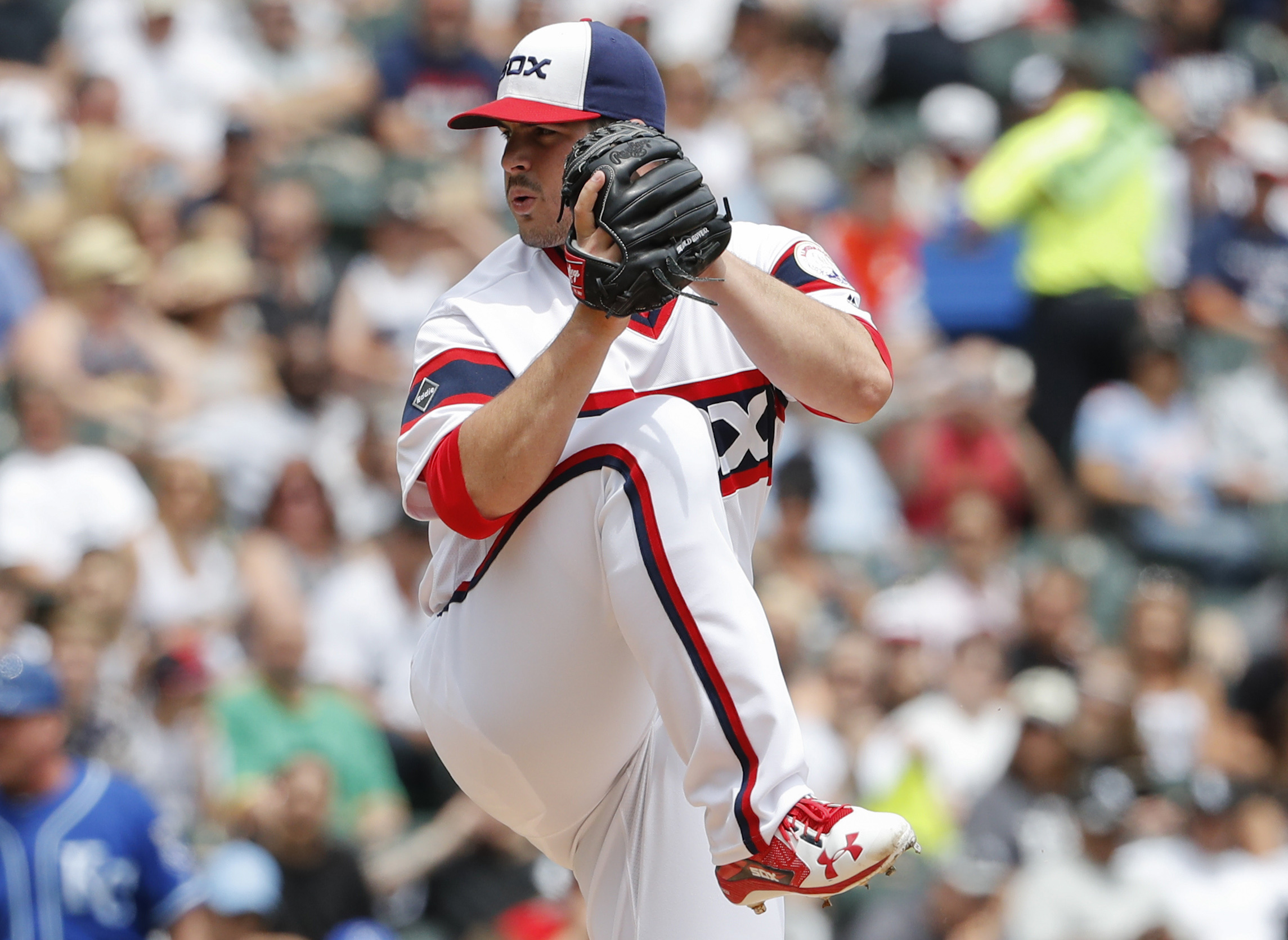Last year, rookie pitching phenom Carlos Rodon made his major league debut on April 21, 2015. Rodon had been selected as the third overall pick in the first round of the draft on June 5, 2014. Not even one year after being selected by a major league organization, Rodon found himself a part of that team’s major league club.
Rodon struggled early with command, which would plague him throughout most of the rest of his first season in the majors. In Rodon’s first outing, a chilly April night at U.S. Cellular Field, he allowed two earned runs and walked three Cleveland batters in 2.1 innings of work. He faced 13 batters in all and managed just one strikeout. He was simply stated, a work in progress.
As the season progressed, fans would watch with an uncertain eye as Rodon struggled with his command and the ability to harness a useable third pitch, even as he made his way into the Sox rotation after just three games working out of the bullpen. Rodon showed flashes of grand ability that were often muddled by his rookie struggles, but he possessed a sharp slider, and good velocity — the type of brilliance that reminded Sox fans that the potential for success was certainly there and why the patience was necessary.
“You’re not going to be throwing 40-plus percent sliders for a long time,” GM Rick Hahn said of Rodon during his time in Triple-A in 2015, indicating that finding a third pitch was key to helping Rodon succeed as a starter. The command needed to improve on all his pitches, but most importantly, the changeup needed to develop into a strong third option.
“In our opinion, Carlos can be a front-end type starter, and it’s a matter of developing him along those lines and getting him there.” Hahn continued. A year and a half later, Rodon is showing the White Sox that Hahn was right.
“It’s a pitch I’ve been trying to develop since I’ve been in professional baseball,’’ Rodon said of his changeup after an outing this September.
That’s been the key to putting it all together for Rodon in 2016. In the first half of the season, the White Sox simply saw more of what had made many more impatient souls skeptical of Rodon in 2015; a 15.5 percent HR/FB rate, a 4.50 ERA, and a .291 opponent batting average.
Fast forward to now. It’s still just the second half of Rodon’s second season in the majors, and he is pitching to a 2.52 ERA, has lowered his opponent batting average to .236, and has worked on commanding the strike zone — lowering his walk rate from 7.8 percent in the first half to just 5.9 percent in the second half.
It all came together at once, the third pitch, and the improved command, and the ability to deceive batters via strong sequencing.
“It’s a pitch I’m definitely going to use more often,’’ Rodon said of his newfound confidence in his change. “The changeup gets them off my fastball and makes it seem a little harder. It opens up the plate for me to throw heaters in there, and they just beat it in the ground or pop up.’’
Check out the progression on Rodon’s changeup, as well as his slider, in the second half of 2016:
|
Changeup |
|||
| CalStrk% | Swing% | Whiff% | |
| First Half | 16.09 | 39.08 | 10.34 |
| Second half | 29.17 | 36.81 | 13.89 |
|
Slider |
|||
| CalStrk% | Swing% | Whiff% | |
| First Half | 30.84 | 47.39 | 18.59 |
| Second half | 34.43 | 51.37 | 20.77 |
That’s quite the improvement, and certainly evidence of where Rodon’s exceptional second half success has stemmed from.
The proof is in the numbers as far as Rodon’s command of the changeup goes as well, in the 2015, Rodon’s changeup was seeing the zone just 27.7 percent of the time he threw it, causing his walk rate on the pitch to climb to 15.6 percent. In 2016 though, Rodon is throwing the pitch in the zone with 35.7 percent frequency, and has seen the pitch’s walk rate dip to just 6.3 percent.
As far as the slider is concerned, Rodon now has a 47.4 percent strikeout rate and a four percent walk rate on the pitch in 2016, as opposed to just 44.7 percent strikeout rate and 8.3 percent walk rate in 2015. These may seem like small variations to some, but these incremental gains in baseball can help a pitcher make large strides towards success.
“If you have three pitches a hitter has to worry about, it makes you so much better. And now we found out we can throw the slider back door (to the outside corner to right hand hitters) so that helps us a lot. He’s been pretty good.’’ White Sox catcher Omar Narvaez said of Rodon.
There hasn’t been a lot to look forward to as the days roll onward on the South side, so keeping a watchful eye for the future is the goal. The improvements that Rodon has made over the last several months have helped him become the well-rounded pitcher that baseball expected him to become for the White Sox back in June of 2015. His developmental path may have put his flaws and struggles in the spotlight, but all it took was a little patience and faith to see Rodon’s true talent and success unfold.
Photo courtesy of Kamil Krzaczynski-USA TODAY Sports

1 comment on “Carlos Rodon’s turnaround was led by a change”
Comments are closed.